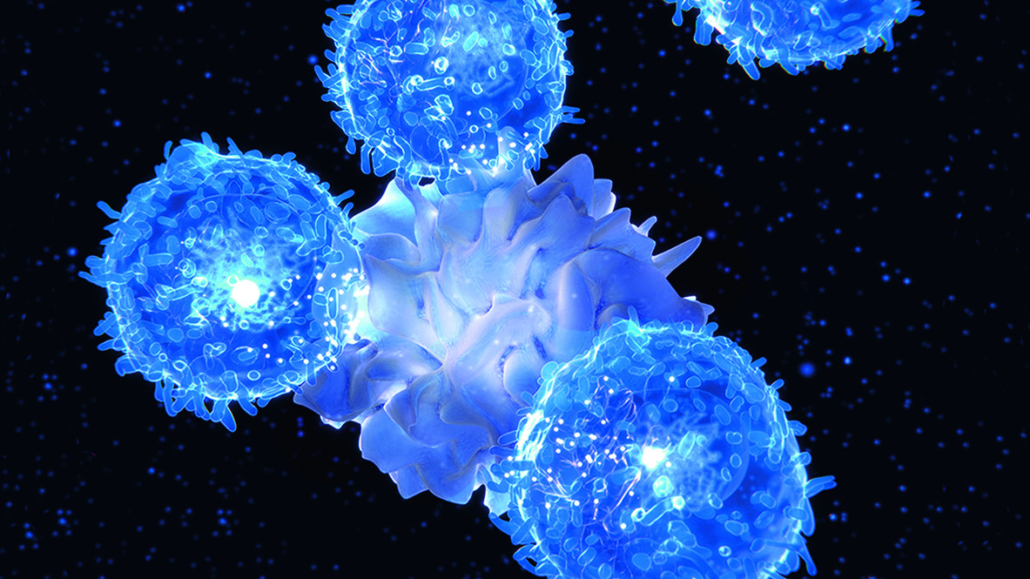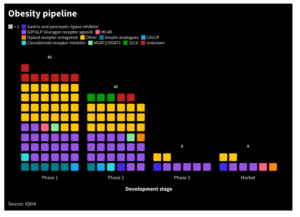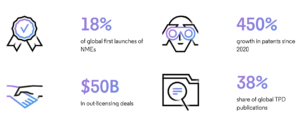
A SARS-CoV-2-specific T cell isolation method
The COVID-19 pandemic created exceptional circumstances for virologists. To speed up the process from initial basic experiments to the final clinical application, appropriate reagents are required. Isolation of SARS-CoV-2-specific T cells via the MHC Streptamer® approach yields label-free, fully functional cells, making this method a valuable tool for high quality research.
Understanding the immune response underlying SARS-CoV-2 is currently a key interest in life science research as it lays the foundation for the development of treatment options and vaccines. However, extensive basic research precedes the entry into clinical settings to identify underlying molecular mechanisms that can potentially be targeted. To improve the path from the lab to clinical use, the quality standards for products applied in experiments and for the generated data rise continuously.
The irreversibility problem
A breakthrough for antigen-specific T cell research was the development of major histocompatibility complex (MHC) multimers in 1996. This method enabled the direct measurement of cell frequencies and allowed the sorting of these cells for a detailed analysis. This was not possible before, because the affinity of MHC monomers to a T cell receptor (TCR) is too low to stably bind to cells. Although the multimerisation of several monomers on a backbone to increase the binding strength was an important step for improving infection and cancer research, this original MHC tetramer approach has a major drawback: once the multimeric MHC complex binds to the TCRs of a cell, it is difficult to remove. This complicates the use of these products for experiments beyond simply determining the frequency of an antigen-specific cell population or for gene or protein expression analysis that does not require a prolonged survival of the cells. If further in vitro cultures or even in vivo applications are needed, the sorted cells should be functional and their original phenotype should be affected as little as possible. However, when exposed to physiological temperatures, MHC multimer-sorted T cells start to internalise the staining complex and even undergo apoptosis.
The MHC Streptamer® solution
The negative effects of irreversible labeling reagents called for a method that permits an easy removal of multimeric MHC complexes from the cell surface. This was achieved by the development of MHC streptamers. The MHC Streptamer® approach is based on IBA Lifesciences’ Strep-tag® technology. Its key feature is the reversible multimerisation. As with other multimerisation technologies, MHC molecules are bound to a backbone to increase the avidity. The binding is mediated by a short peptide sequence (called Twin-Strep-tag®) that exhibits intrinsic affinity towards a streptavidin derivative (called Strep-Tactin®). Since this affinity is still lower than that of biotin to Strep-Tactin®, biotin addition causes the release of the tagged MHC molecules from the backbone and thereby the disaggregation of the multimeric complex. The resulting MHC monomers spontaneously dissociate from the cell due to their low affinity to the TCR. The complete removal of all labeling reagents after the sorting procedure generates label-free and vital cells that allows prolonged culture in vitro, enabling the analysis of signaling pathways etc., the effects of different components on the activation status or the interaction with other cells. This possibility of label-free isolation broadened the applicability of MHC multimers in antigen-specific T cell research.
IBA Lifesciences GmbH is a biotech company headquartered in Göttingen, Germany. Its proprietary Strep-tag® technology platform comprises of MHC Streptamer® reagents for SARS-CoV-2-specific T cells, products for the purification of viral proteins (e g. the receptor binding protein of the SARS-CoV-2 Spike protein) and the subsequent analysis via the available assay products. This way, we can provide various tools for COVID-19 research and support the quality standards in this field and in various other cell and protein research areas.


 IQVIA
IQVIA White House
White House Clarivate
Clarivate